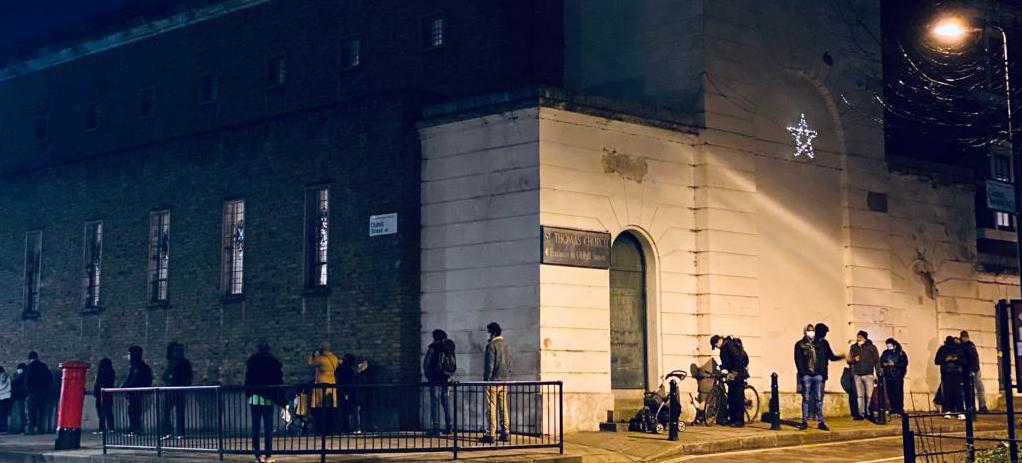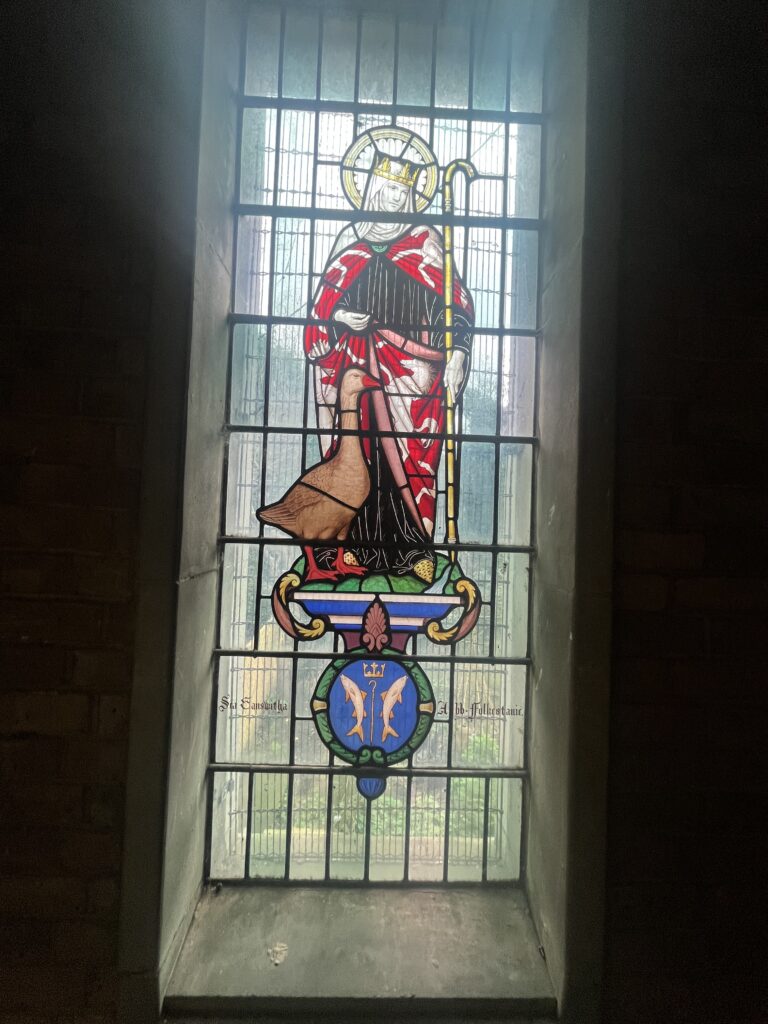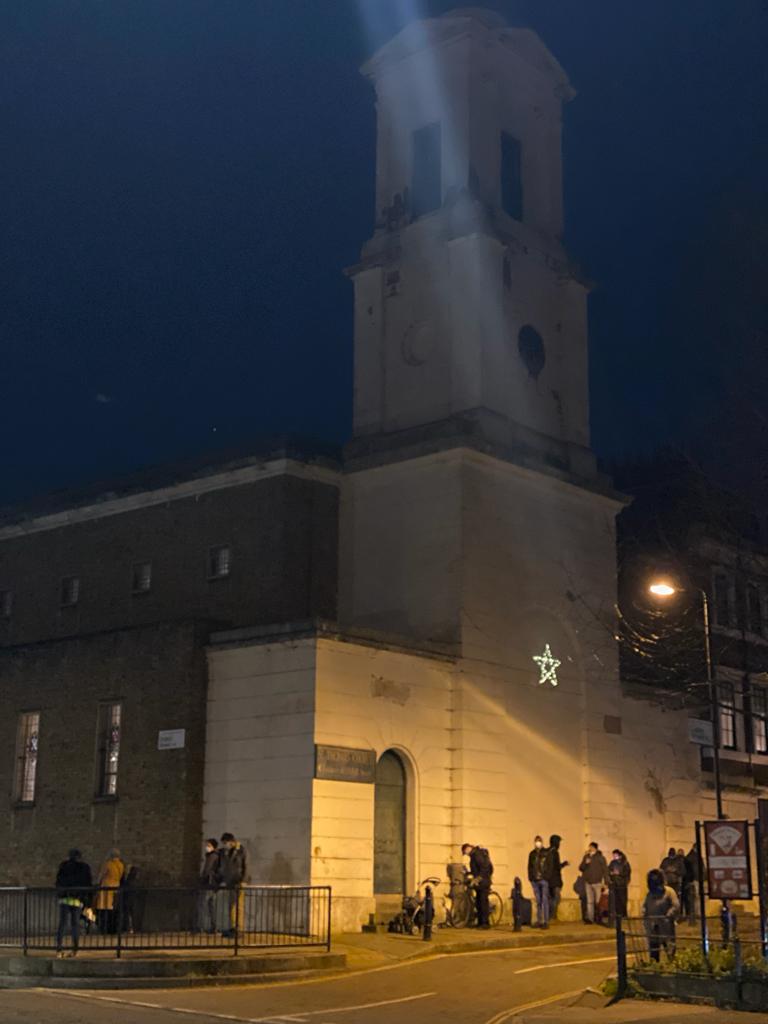
All hands to the parish pump
Living with a series of leaks in his church building, Father William Taylor reflects on the purpose of churches – that they are meant to be places that irrigate relationships and which mediate between the realms.
I was on retreat at Malling Abbey in Kent late last August. Despite its seclusion and the chance to forgo 24/7 connectivity for a couple of days I did happen to work out the spots in the abbey grounds where I could get sufficient network coverage to ring my wife and check the football results. One evening I strolled out before compline and casually scrolled through my emails. Probably I shouldn’t have done so.
I discovered that Hackney Council had served us with something called a section 215 court order. They had issued it because of the disrepair of our church tower. The new conservation officer at the council had decided to use this power to require us to do a bunch of things to smarten ourselves up including re-rendering our exterior stucco, cleaning the clockface, replacing a broken hopper and redecorating a couple of doors. As well as removing the Buddleia. They said that if we didn’t do all of this they would take us to court. They gave us six months.
Now, I am not going to lie. Our Georgian tower does need some attention. There are patches that look like it is suffering from an advancing skin disease. But I think it’s a stretch to say that the peeling paintwork seriously affects the amenity of the residents along the terrace, as the s215 asserts. Besides, as a parish, we don’t have a couple of hundred thousand pounds hiding down the back of a pew. We can do some of the jobs in three weeks but it’s going to take us more like three years to raise the money to complete the substantive work of redecoration.
The tower’s disrepair is actually not the reason we’re on Historic England’s ‘at risk’ register – that’s the badly leaking asphalt roof, part of the 1950s reconstruction of the nave after the war. Buckets are arranged on the church floor and the sound of water hitting or missing them punctuates our silences. My churchwarden has tired of my jokes about recreating that first Christmas in the stable around the back of the inn. When are we going to get the roof fixed? she asks.
When I go up to inspect the roof it’s clear that we’re at the crest of a slight hill (indeed, at the top of Oldhill Street) before it falls away to the north towards the River Lea. I’m told that there are streams and water courses that flow beneath us into Springfield Park (the clue is in the name) and then out into the Hackney Marshes. After heavy rainfall the water table seems to rise and, in the past, has flooded our undercroft. If it’s not coming down upon us from above it’s coming up from below. Will our little vessel make it into harbour?
Then, turning around to the south, on the horizon, are the towers of the City of London, that opaque network of interests with its own taps and valves and watery reaches. Here it’s all about a different kind of liquidity. It’s about how to keep money flowing through the global financial system, not least with the help of multiple reservoirs of off-shore capital. The City is there to keep the economy growing. At least that’s the messaging.
Actually there is a deep trench between this macro-economic horizon of possibility and the reality of the lives being lived on the housing estate directly opposite my church. Here, after nearly three months, one of my parishioners, a pensioner in his 80s, is still waiting for his carpet to be replaced after a pipe burst in the kitchen and flooded his flat. The council also removed the door and didn’t replace it. They simply don’t have the resources to deal with the volume of repairs demanded by residents. The public accounts are dry. Charles has spoken on the phone to various customer experience managers and he’s been told they are looking into it.
Although the managers in the Church of England are not really interested in our customer experience they have been studying our financial returns. If not exactly in special measures, my church (along with others) has been told by the Diocese of London that unless we grow our future as an independent parish is in doubt. We’re being given our targets and asked to double our giving over the next six years. Unfortunately this does not factor in our building liabilities (see above) nor our round of routine repairs and the cost of going carbon neutral. Is this a goer? We’ll give it a go, though already the church down the road is being closed because it has dwindled below a number deemed sustainable.
A crumbling tower, a leaking roof, an importuning archdeacon, I am left with the question: actually, what kind of building is this? To the conservation enthusiast it’s a heritage asset. To the groups that use our spaces it’s a community hub. To the managers in the carpeted areas of the Church of England it’s a spreadsheet. And to the bishop, watching the waters pool in the disintegrating asphalt of the roof, like a latter-day Noah, it’s probably still the ark of salvation. I guess this is also the received understanding of catholic Christendom, calling the faithful into the safety of her sacramental fellowship, ahead of the coming storm.
*
Before I leave Malling abbey I arrange to meet with the abbess in the Eanswythe Room. Mother Anne and I are meeting to talk about a retreat day we are planning. The retreat is on the Wisdom tradition, itself a stream of teaching and practice that flows through the desert fathers and mothers into the contemplative tradition of the medieval church and now, through various hidden courses, still finds itself irrigating the parched corners of the church, of the world.
I’m a little non-plussed by the name of the room and so she pronounces it for me. She tells me that Eanswythe (“eans as in beans”) was a 7th Century saint from Folkstone in Kent and a favourite for her community because of the way she caused the water to flow uphill to sustain her monastic enclosure. With its own watered gardens and trenched stream passing through the grounds you can see why this Anglo-Saxon saint still appeals to the nuns at Malling Abbey. I guess Eanswythe’s charism is as a kind of spiritual pumping station.
A couple of days later I’m back in Hackney looking for some folding tables at the back of the church, preparing for one of our events, hoping to raise a bit of money for our roof. We store our tables in a lobby that was once the area behind the altar in our former lady chapel but is now an enclosed vestibule that accommodates our platform lift, a requirement of recent Equalities legislation; the less mobile need to be able to get into the ark too. As I go to collect the folding tables from this cubbyhole I walk into another patch of wet on the parquet floor. I’m stopped in my tracks, exasperated, what the heck.
Sometimes I tell people that I’m actually a preacher and not a facilities manager or fundraiser or events organiser. It amuses me partly because it’s so patently not true. I spend most of my time chasing grants and trying to address the disintegrating structure of our building. In churches such as mine being the vicar is all about the custody of the physical structure. There’s no way round this. But now, with tears of fury and frustration, I look up at the ceiling to see where this new leak appears to be coming in. Nothing. Then my searching gaze takes in the stained-glass window that peeks out from behind the lift shaft. I must have passed it daily for the last fourteen years but I’ve never properly noticed it before. On this occasion, to my astonishment, I see it’s dedicated to St Eanswythe.
I sit in the dark church, listening to the water falling from the ceiling and hitting the floor. As I surrender to the silence I have a powerful sense of being pulled into an energy stream passing through the nave of the church from the font at the west end through hanging rood and out through the apse at the east end onto the Common land beyond. It occurs to me that maybe the building is not principally a heritage asset or community hub or even an ark of salvation, though it can be all of these. More than anything its calling today is that of a pumping station. The living water is everywhere but it pools and stagnates and it’s our job, the church’s job, to keep it moving through the neighbourhood, irrigating that field of abundance where there is flow and reciprocity between the realms. Later I go back later to inspect the new leak and it’s gone.
When my spiritual-but-not-religious friends tell me that, you know, they find God in nature and not in organised religion, I say that’s nice. But privately I think they’ve been captured by logic of the City of London, where all that is solid melts into air and where spirituality is hollowed out into a personal holiness project for high functioning egos. Even if we’re a bit leaky in Clapton at least we’re still somewhere that people can gather to sing songs of lament and praise and take up their post at the junction between the realms. Churches are places where we can practise the skills of association, of attention, of surrender. Their very physicality enables the energy to flow. But to remain open we will actually need to be more and better organised. All hands to the pump.
© Father William Taylor
Father William Taylor is the author of This Bright Field (Methuen 2000) and a parish priest in Hackney. Follow him on X at @hackneypreacher. Photos: @kristinperers
Fr William will be leading a day on Cynthia Bourgeault and the Wisdom Tradition at the St Benedict’s Centre at West Malling with Mother Anne OSB on 9th March 2024.
This story is featured in the Lent 2024 edition of the T4CG Newsletter.


If you found this meaningful, you can explore more content like it by subscribing to Together for the Common Good on Substack.
